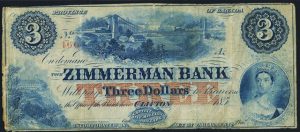On today’s date in 1853, the Great Western Railway (GWR) extended its line from Hamilton, Ont., to the Niagara Suspension Bridge, which crossed the Niagara River from 1855-97.
The GWR connected Toronto to Hamilton before extending to Niagara Falls, Windsor and the Bruce Peninsula. Although the Hamilton-to-Niagara Falls line officially opened on Nov. 10, 1853, regular service began 10 days later.
The GWR stretched nearly 1,400 kilometres with its main operating base in Hamilton, where its locomotives and railway cars were produced. In 1882, the railway was taken over by the Grand Trunk Railway (and later the Canadian National Railway).
Many of the lines have been maintained since the 19th century and remain in use today.
WORLD’S FIRST SUSPENSION BRIDGE
The Niagara Suspension Bridge – the world’s first working railway suspension bridge – was completed in 1854, and the first train crossed in 1855. It had two decks (one for trains and another for pedestrians and carriages) that were eventually upgraded from wood to steel before being dismantled in 1897.
The bridge was heavily promoted by entrepreneur Samuel Zimmerman, who was born in Pennsylvania but came to Canada in the 1840s as a contractor for the reconstruction of the Welland Canal. Later, he was also a contractor for the GRW line to Niagara Falls.

A $3 note issued by Zimmerman Bank depicts the Clifton House, the first luxury hotel in the Niagara Falls area, in the bottom-left corner.
Zimmerman’s friend, Roswell Gardinier Benedict, was the assistant chief engineer before becoming the chief engineer on the project. Although Benedict’s career was mainly focused on railway construction, his first significant project was on the Welland Canal, which was where he met Zimmerman.
ZIMMERMAN BANK
Zimmerman was the main shareholder in the Zimmerman Bank, which initially operated as a private bank before receiving a charter in 1855. It was based in Elgin, one of the communities comprising modern-day Niagara Falls, Ont., in what was then known as Canada West.
Notes issued by the bank featured the suspension bridge and Clifton House, a hotel owned by Zimmerman, on the face.
Zimmerman, who owned nearly all of the bank’s capital, died in 1857, after which time the bank became the Bank of Clifton, which operated until 1863.

